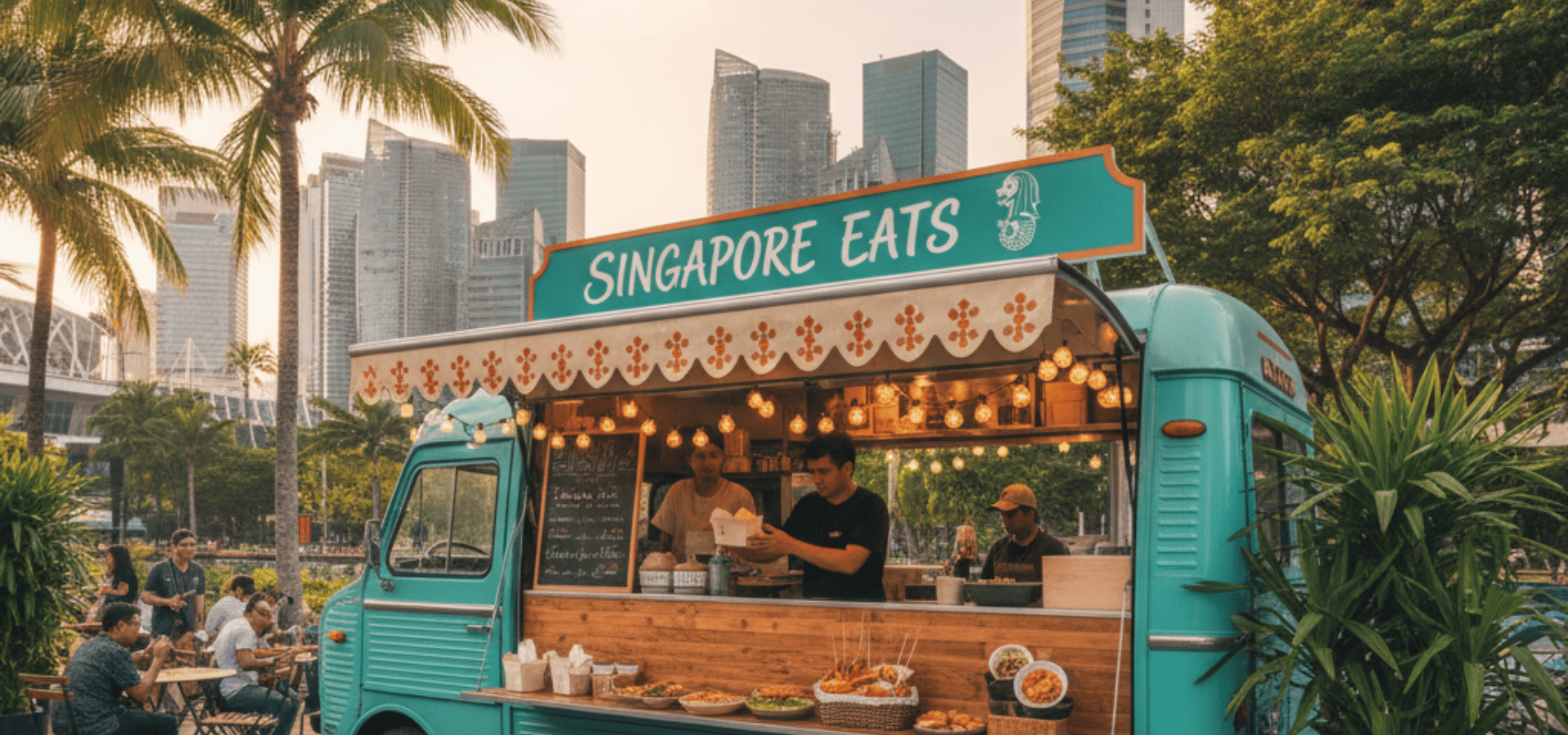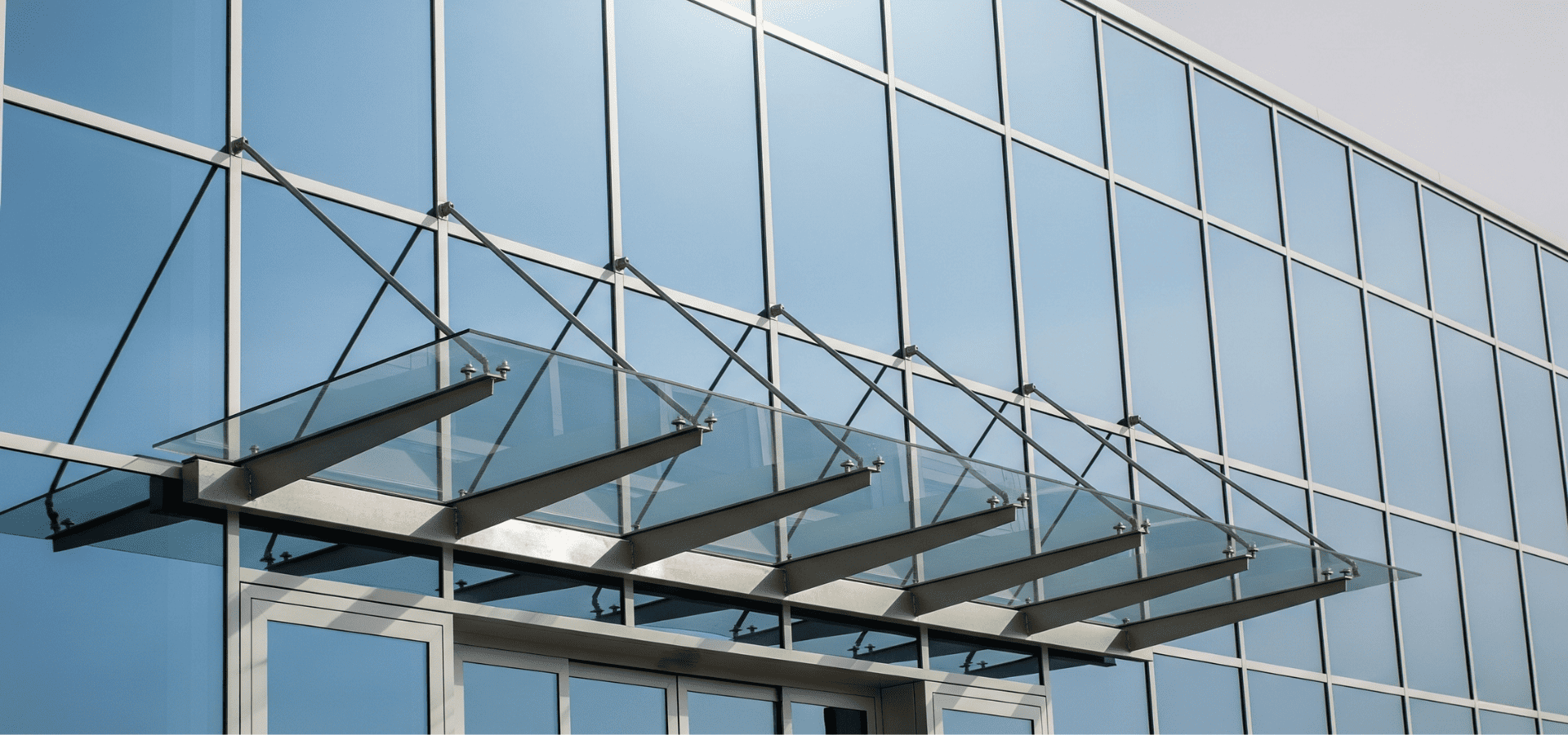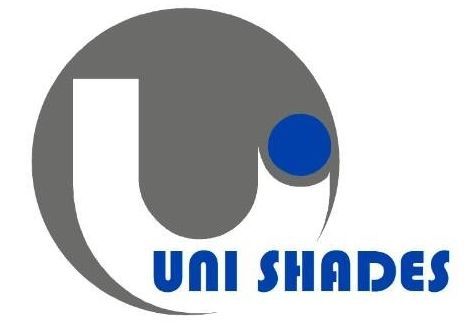Awning Coatings: How To Protect Your Shade From Sun, Rain, And More
Once the awning is installed, most people usually just leave it as it is, because they assume that their awning is more than enough to keep the sun and rain out.
And that’s true to a large extent.
However, if you don’t coat your awning with the necessary protective coatings, it’ll quickly wear out or discolour, and you might have to perform frequent repairs or even replacements.
This is especially so in Singapore’s environments, where harsh, glaring UV rays attack your awning relentlessly 365 days a year.
The good news is, all it takes to extend your awning’s lifespan and reduce the amount of repairs that you’ll need to do is to apply coatings that shield it from these harsh weather elements.
These coatings will also prevent colour fading and keep mould and mildew away.
Sounds good?
Then let’s dive right into the coatings that are available on the market for protecting your awning.
Waterproof Coatings
Waterproof coatings are, as you can probably guess, coatings that make your awning waterproof.
This may come as a surprise to some, but many fabric awnings are actually not waterproof — they’re merely water-resistant.
Water-resistant awnings do repel water and keep it flowing off your awning, but during prolonged periods of heavy rain, rainwater will eventually get past the water-resistant layer and be absorbed by your fabric.
In more severe cases, water may even seep through the fabric.
Even taking aside the fact that you obviously don’t want water dripping onto you while you’re under the awning, water absorption is harmful to your fabric awning.
When water gets into fabric, your fabric swells, and then when it dries, it shrinks again. This process causes issues like permanent shrinking, tightness at the seams, and in the worst cases, ripping at the seams due to the tightness.
On top of that, where there’s trapped water, there’s always the risk of mould and mildew, which can cause permanent stains and damage (and they’re just nasty).
So to minimise the risk of water-related damage to your awning and prolong its longevity, you need to waterproof it so that no water reaches the fabric.
Here are your options.
1. Petroleum-Based Coatings
Petroleum-based waterproof coatings provide reliable waterproofing while maintaining the flexibility of your awning.
These are usually the most affordable option for those looking for robust waterproofing for their fabric awnings.
The catch is that they’re also higher in VOCs and are less durable, so they’ll wear out quicker as compared to the other options.
They also don’t provide much protection against UV rays, which means your awning can still fade or discolour from UV ray exposure.
Still, if you’re looking for the most affordable waterproofing option upfront, there’s no cheaper option than petroleum-based coatings.
2. High-Quality Acrylic Formulations

Think of high-quality acrylic solutions as the upgraded version of petroleum-based solutions. They’re more eco-friendly, less toxic, provide protection against UV rays, and last longer.
In addition, advanced acrylic formulations also maintain the flexibility of fabric better in the long run. Petroleum-based formulations are great in the beginning, but can stiffen up as time goes by.
While acrylic solutions tend to cost more, you’re actually saving yourself money in the long run, as you won’t have to recoat as often, and you’ll better preserve the colour of your awning.
In a nutshell, a high-quality acrylic waterproofing solution will have a higher upfront cost, but over time, you’re actually saving yourself money while protecting your awning better and doing less harm to the environment.
Petroleum-based solutions are still a viable option if you’re on a budget or your awning is fixed, so you won’t need to maintain its flexibility. But for retractable fabric awnings, advanced acrylic coatings are the clear winner.
3. Polyurethane (PU) Coatings
PU coatings are heavy-duty waterproofing coatings that are usually used for industrial purposes. They’re meant to stand up to heavy traffic and harsh chemicals, on top of water and the sun.
Given their toughness and durability, it should come as no surprise that PU coatings are also more pricey than petroleum-based and acrylic coatings.
And that’s not the only drawback.
PU coatings are also less breathable, meaning they trap heat. That alone should be enough to be a dealbreaker for most Singaporeans.
With that in mind, they’re best reserved for industrial environments and not residential use. They do provide very solid all-around protection, but they also cost more.
For residential use, they’re just not worth the price since you don’t need such robust protection.
Furthermore, they’re less flexible than petroleum-based and acrylic solutions, making them a poor choice for retractable awnings, which is what most homeowners in Singapore use.
4. Hybrid Coating Technologies
Lastly, if you’re looking for a waterproof coating that combines all the good qualities of the above-mentioned coatings into one solution, this is it.
Depending on how they’re engineered, hybrid coating technologies can:
- Provide UV protection
- Maintain fabric flexibility
- Contain minimal VOCs and other toxic substances
- Have long lifespans
- Require minimal maintenance
Not all hybrid coating technologies will have all those qualities, but the best ones do. And even less impressive hybrid coatings will still combine the best qualities of at least two of the three coating types above.
As you’d expect though, hybrid coatings technologies are the most costly.
They cost about 2-4 times as much as petroleum-based and acrylic coatings, and about 25%-40% more than PU coatings, so hybrid coatings are definitely a premium option
That said, they’re also the best, and as the saying goes, you get what you pay for.
They’re extremely versatile and can be used for just about any application, including industrial applications.
This also includes residential use. They are somewhat overkill, but since they’re breathable and don’t trap heat, you could definitely use them if you want the added protection and longevity.
Basically, if you have the money to spare, or you just want the most powerful all-around protection for your awning, opt for hybrid coatings.
Now, if you’re applying the coating yourself, there are some things to look out for, and you need to use the right technique, so we’ve also prepared this guide to waterproofing your coating.
UV-Resistant Coatings
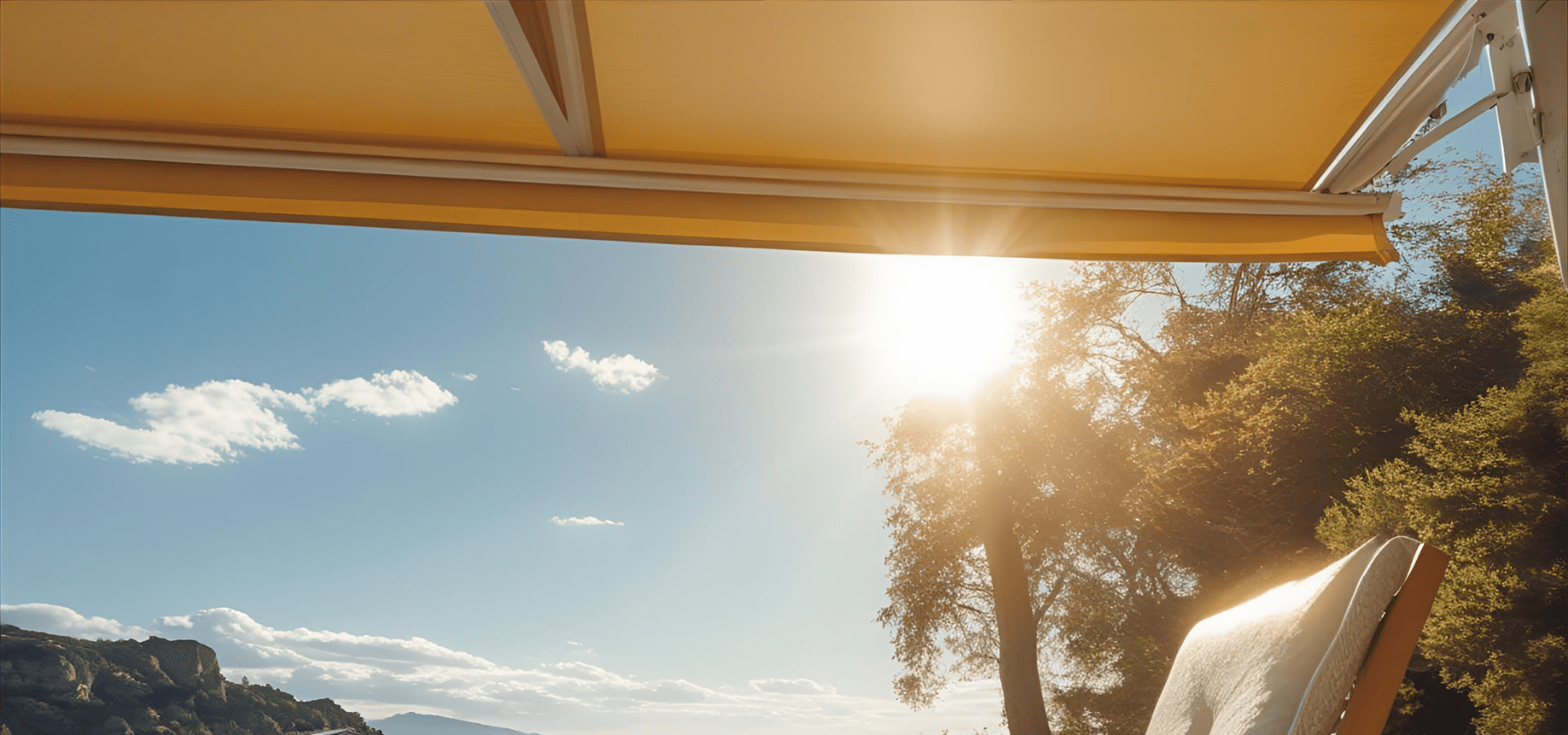
UV-resistant coatings aren’t typically standalone coatings. In other words, you’ll seldom see coatings just for the sake of UV resistance.
Instead, UV resistance is usually a feature of multi-functional formulations that can include waterproofing, mould and mildew resistance, stain repellency, and so on.
Here are the two main types of technologies for UV resistance.
1. Titanium Dioxide Technologies
The first UV-resistant technology is titanium dioxide (TiO₂).
When TiO₂ is added to a coating, it reflects most of the UV radiation and also absorbs a little of it to keep as little of it from reaching your awning material as possible.
As a bonus, TiO₂ also extends a coating’s lifespan and makes it tougher
2. Advanced UV Absorbers
The second main type of UV-resistant technology is advanced UV absorbers.
The most commonly used absorber is Benzotriazole (BTZ).
As you can probably guess from the name, UV absorbers don’t reflect, but absorb UV rays. They then convert these rays to heat.
Both UV absorbers and titanium dioxide serve to keep UV rays away, but they have different qualities.
Titanium dioxide primarily works by reflecting UV rays rather than absorbing them, so there’ll be less heat buildup from the rays.
However, TiO₂ is white and opaque, so it can’t be used for clear coatings or darker colors, as it would cause the dark colour to become lighter.
On the other hand, advanced UV absorbers are transparent, so they won’t affect the colour of the coating.
So if your coating is dark-coloured or transparent, it’ll usually be using UV absorbers, with the downside being that it will absorb more heat.
Antimicrobial And Self-Cleaning Coatings
Want to clean your awning less often? Then these antimicrobial and self-cleaning coatings are perfect, because they'll do your job for you.
Here’s what's available.
1. Nano-Scale Self-Cleaning Coatings
This is a type of nano-engineering that creates microscopic structures on a surface to make it superhydrophobic, i.e. super repellent to water.
This may sound similar to waterproofing, but the key difference is that with this treatment, dirt is taken off with water.
Self-cleaning coatings make it such that dirt and dust don’t adhere as well, so when there’s water, not only will it roll off easily, but take dirt and dust with it.
So essentially, each time it rains, nature is cleaning your awning for you.
As you can imagine, this will significantly cut down on the frequency of cleaning needed. It won’t remove all dirt and stains, as there will inevitably be more stubborn ones like bird droppings, but you’ll definitely find that your awning is much cleaner overall, and you won’t have to clean it as frequently.
2. Photocatalytic Coatings
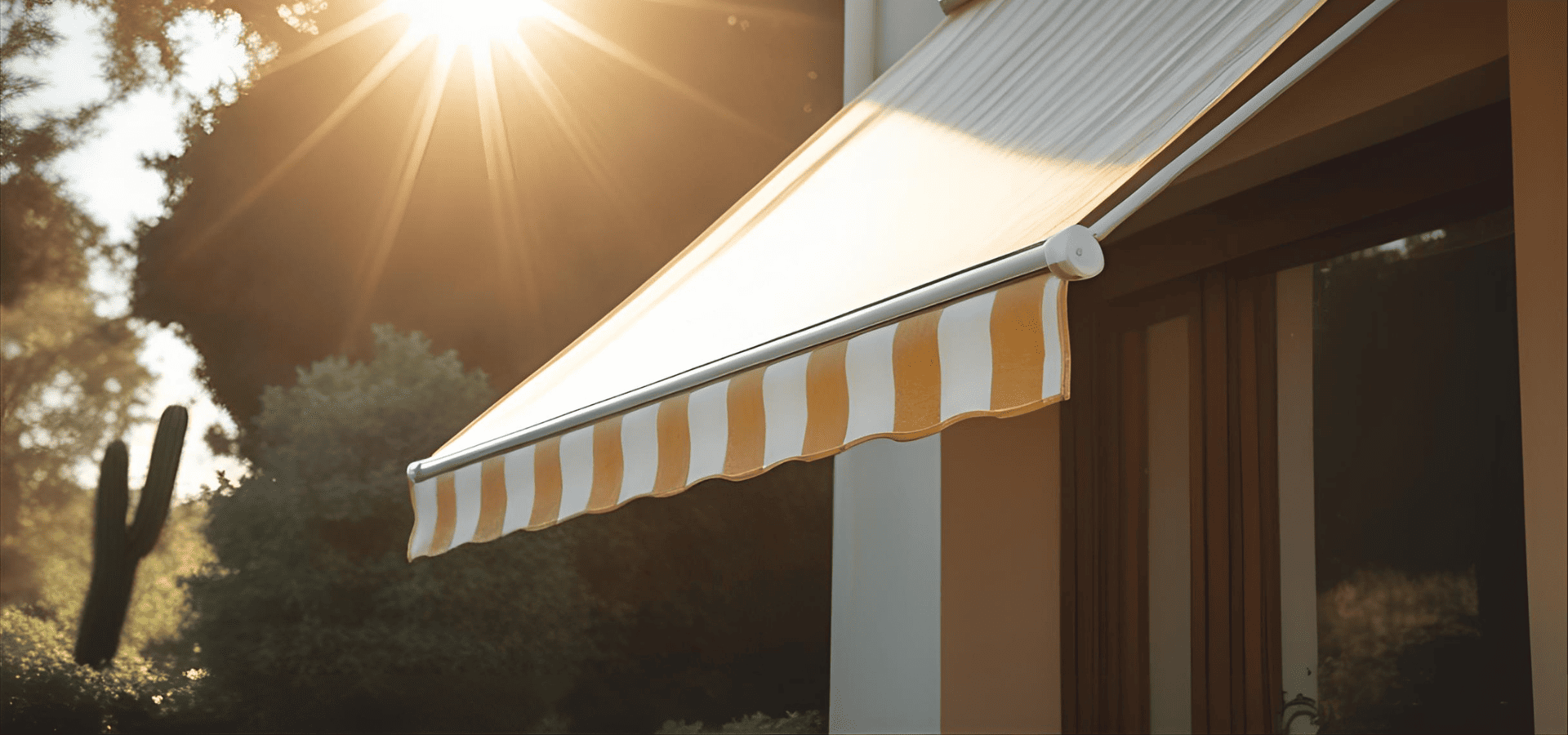
While nano-scale self-cleaning coatings help remove non-organic matter like dirt and dust, photocatalytic coatings do the opposite — they chemically break down organic matter so that they’re easily washed off by rain or manual rinsing.
Some examples of organic matter that photocatalytic coatings can break down include bird droppings, algae, and even mould and mildew.
Once these are broken down, even if they stay on the awning, they’re generally unable to harm the awning in any way.
There is a catch though — these coatings only work in the presence of UV rays.
Photocatalytic coatings contain a different form of titanium oxide from the one used in UV-resistant coatings. When this type of TiO₂ is exposed to sunlight, a chemical reaction occurs that results in the breaking down of organic compounds.
So without sunlight, photocatalytic coatings won’t be able to perform their duties.
Having said that, lack of sunlight won’t be something you have to worry about in Singapore, so that won’t be much of an issue.
3. Silver-Based Antimicrobial Coatings
Silver-based antimicrobial coatings target bacterial growth. Besides just keeping your awning hygienic by killing germs, they also inhibit mould and biofilm formation.
Biofilms are slimy microbial layers that trap dirt and moisture, so antimicrobial coatings keep your surface cleaner and smoother by obstructing their development.
Are Coatings Really Necessary?
Yes, absolutely. Even the toughest and most hardy materials need these protective layers to maintain their performance and integrity.
You could technically do without these coatings, but you’ll have to perform more frequent maintenance, and your awning’s lifespan will be quite a fair bit shorter.
Here’s what you’re protecting your awning from:
- UV Rays: The biggest threat to awnings in Singapore. They cause discolouration, fabric degradation, and compromise structural integrity. UV-resistant coatings help prevent these.
- Moisture Damage: Moisture exposure can result in mould and mildew growth, and as explained earlier, in the worst cases, even cause your awning to tear. A waterproof coating prevents these.
- Atmospheric Pollutants: Industrial emissions and acid rain are harsh elements that chemically degrade your fabric and its supporting structure. Robust coatings like PU or hybrid coatings, as well as photocatalytic coatings, provide sturdy defence against these.
- Organic Threats: Organic threats like mould, mildew, algae, and even bird droppings can all cause fabric degradation. The best coatings to safeguard against these are photocatalytic and silver-based antimicrobial coatings.
With the right coatings and regular maintenance, most awnings should last at least 10-15 years, even in Singapore’s harsh conditions. Without these coatings, you’ll likely get no more than 5-10 years out of your awning.
Conclusion
One last thing to clarify is that you can actually have all those protective qualities at once.
You don’t have to settle for just waterproofing, UV resistance, or antimicrobial protection. You can have them all, either in a single coating formulation or by layering them over each other.
When layering them, just make sure to check if they’re compatible with each other. Check to ensure that your packaging clearly states it can be layered over the respective coating you’re applying it over, eg “Can be applied over UV-resistant coatings” or “Compatible with X-type coatings”.
And when in doubt, do a patch test by layering the coatings in a small, non-visible area of your awning, such as at the corners.
In addition, these coatings can also be used for solid materials too, not just fabric. It's just that solid materials tend to already have those coatings built-in. But if needed, you can always apply these coatings, as long as you check to ensure they're compatible with the material you're using it for.
With that, you now know the options available to keep your awning safe from the elements. Put that knowledge to good use and protect your awning!
